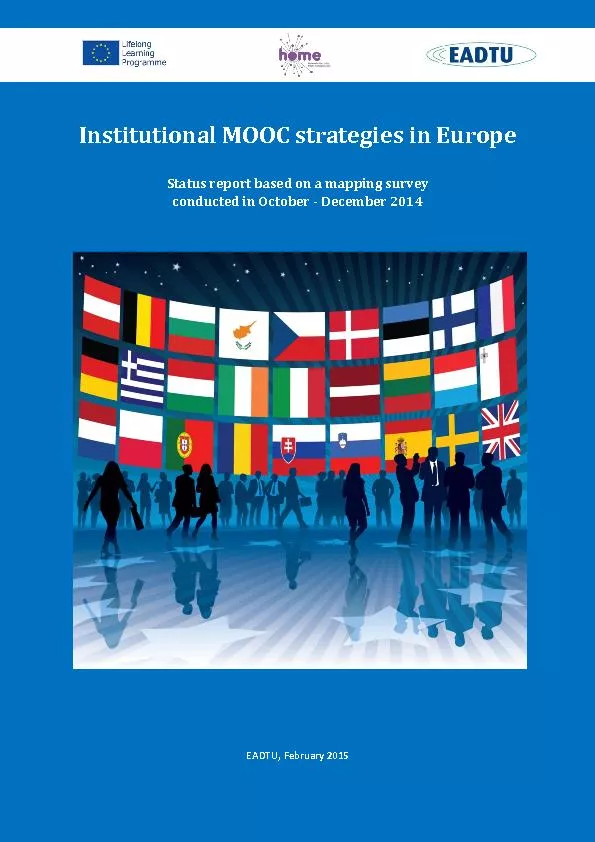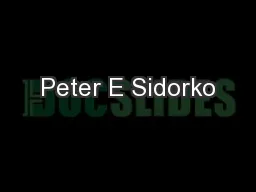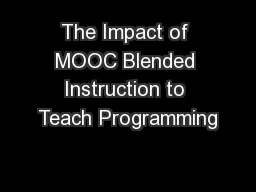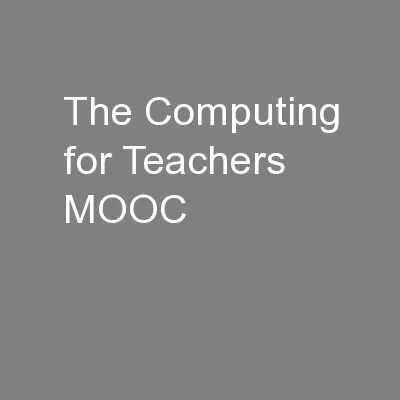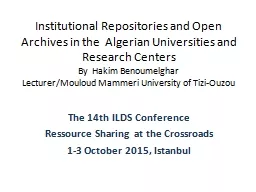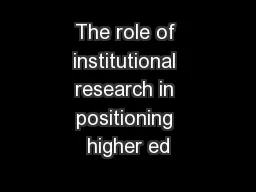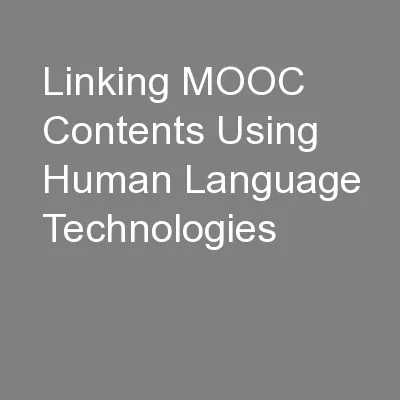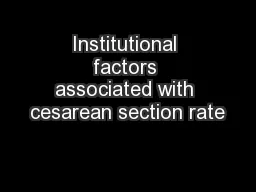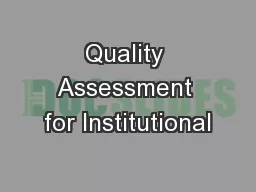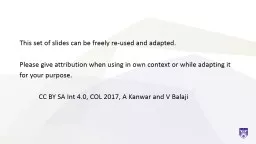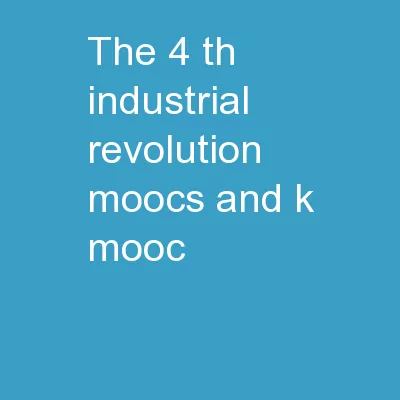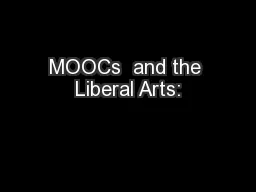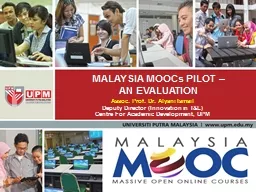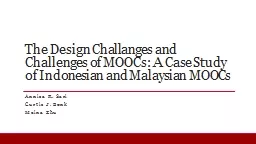PDF-Institutional MOOC strategies in Europe
Author : tatyana-admore | Published Date : 2016-06-02
Status report based on a mapping survey conducted in October December 2014 EADTU February 2015 nstitutional MOOC strategies in Europe Status report based on a mapping
Presentation Embed Code
Download Presentation
Download Presentation The PPT/PDF document "Institutional MOOC strategies in Europe" is the property of its rightful owner. Permission is granted to download and print the materials on this website for personal, non-commercial use only, and to display it on your personal computer provided you do not modify the materials and that you retain all copyright notices contained in the materials. By downloading content from our website, you accept the terms of this agreement.
Institutional MOOC strategies in Europe: Transcript
Download Rules Of Document
"Institutional MOOC strategies in Europe"The content belongs to its owner. You may download and print it for personal use, without modification, and keep all copyright notices. By downloading, you agree to these terms.
Related Documents

